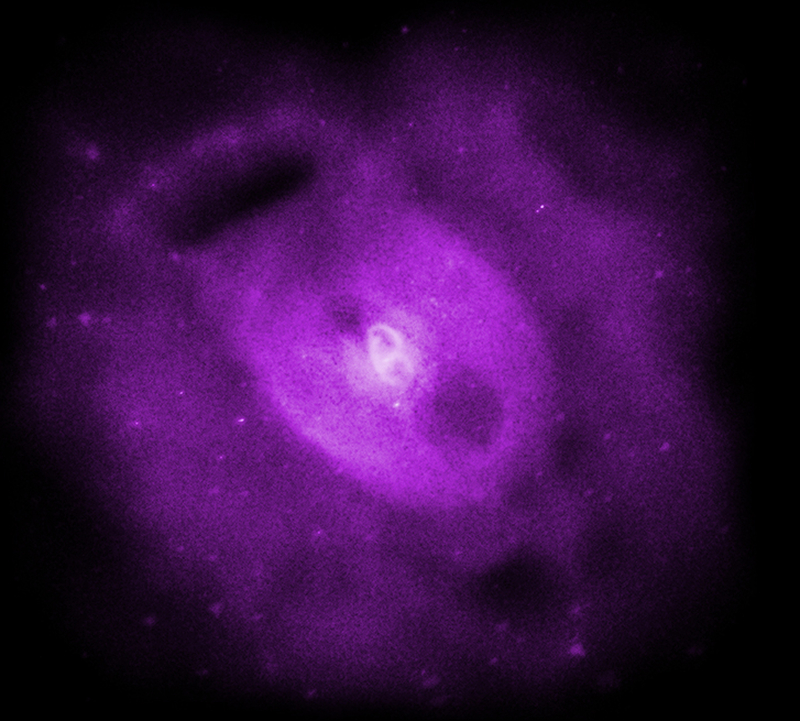
 Credit: NASA/CXC/SAO/S.Randall et al.
Credit: NASA/CXC/SAO/S.Randall et al.
An Erupting Black Hole
A supermassive black hole packs millions or billions of solar masses into a tiny area comparable to the size of our solar system. Amazingly, this tiny region can be powerful enough to sculpt matter in the space well beyond the galaxy where the black hole resides. The image above is a deep X-ray image of a group of galaxies called NGC 5813, obtained by the Chandra X-ray telescope. The X-ray image (in purple) highlights the hot gas which permeates the group, and which contains most of the normal matter in the group. As the image shows, the X-ray emitting gas is not uniform; instead, three pairs of co-linear "cavities" or "voids" can be seen stretching from upper left to lower right, where the X-ray emission is lower than the surroundings. Astronomers believe these cavities have been produced by distinct outbursts from the supermassive black hole in the central galaxy of the group. These outbursts, probably indicative of times when the supermassive black hole is swallowing an exceptionally large amount of matter, help re-heat the intergalactic medium and keep it from cooling. A detailed study of these X-ray cavities shows that the total energy of the outbursts needed to produce the two pairs of outer cavities is about the same, and larger than the total energy of the innermost pair. This suggests that the outburst that created the inner voids is still ongoing, and that these inner voids will grow and eventually expand away from the central galaxy.
Published: June 15, 2015
<
HEA Dictionary ● Archive
● Search HEAPOW
● Other Languages
● HEAPOW on Facebook
● Download all Images
● Education ● HEAD
>

Each week the HEASARC
brings you new, exciting and beautiful images from X-ray and Gamma ray
astronomy. Check back each week and be sure to check out the HEAPOW archive!
Page Author: Dr. Michael F. Corcoran
Last modified Monday, 26-Feb-2024 17:22:51 EST


